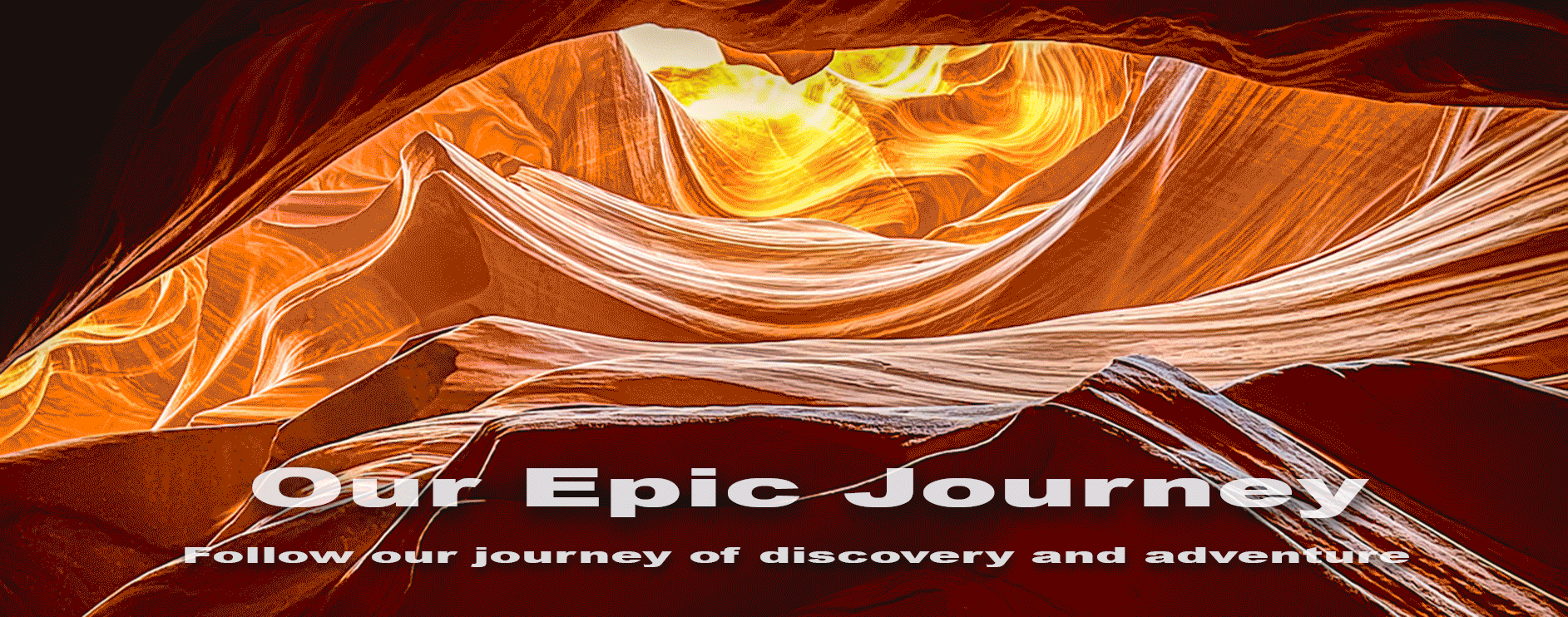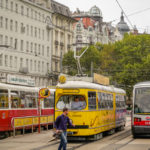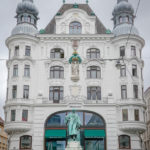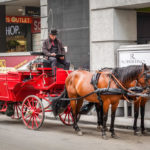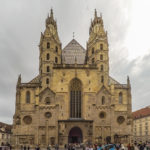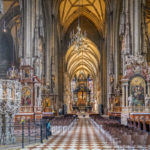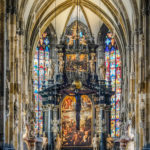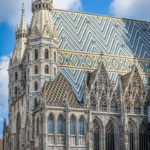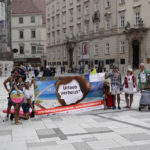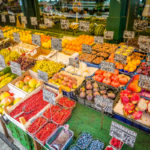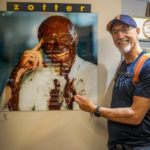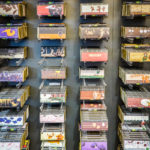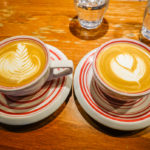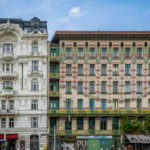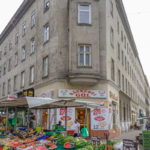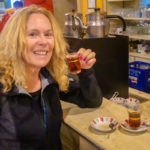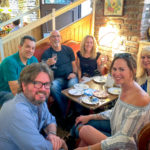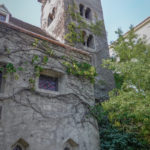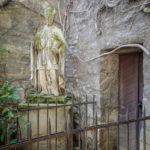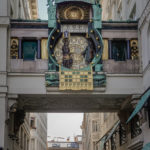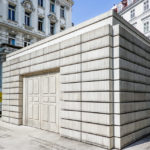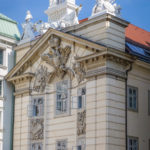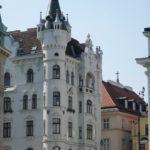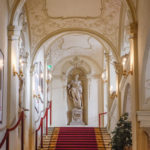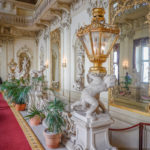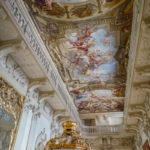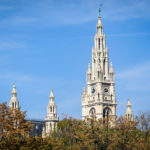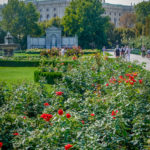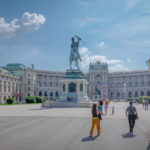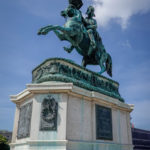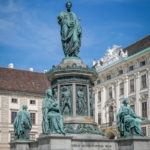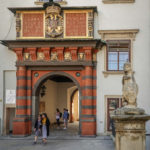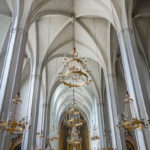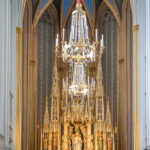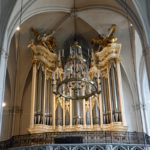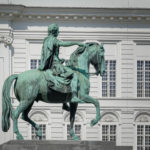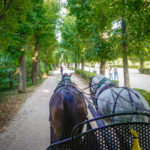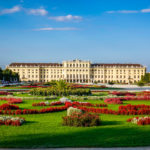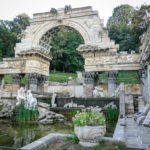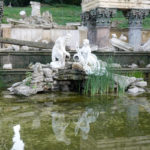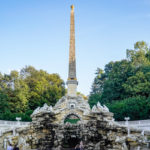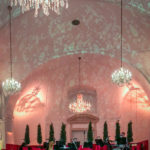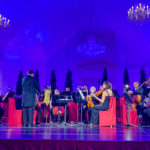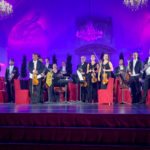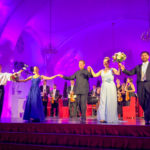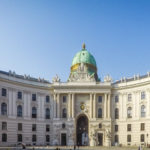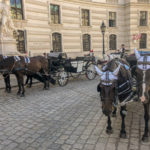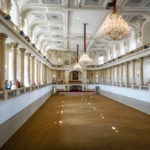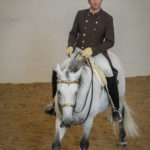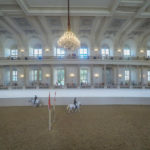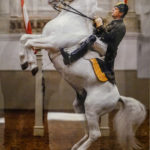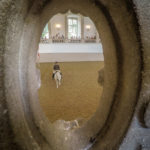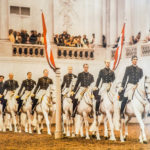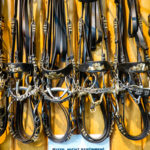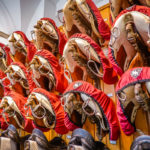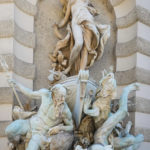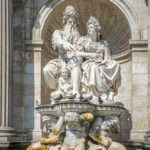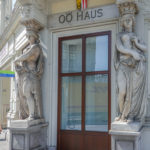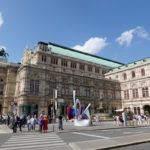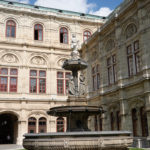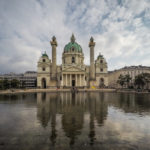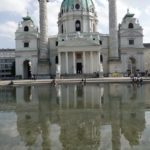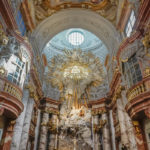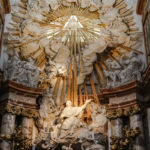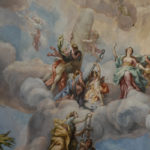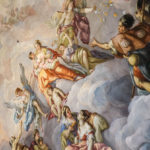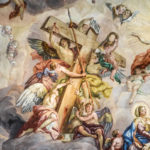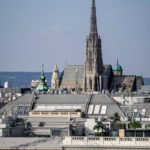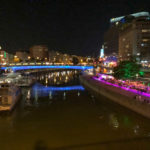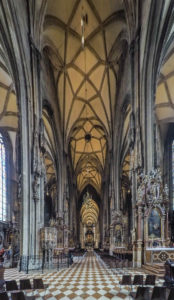
Tuesday, Sept 4th, we arrived in Vienna early, at the Hotel Stephanie, located in the Old Town. We all gathered in the meeting room and the manager welcomed us to Vienna and discussed all that we could see and do here. After checking into our most spacious room we went out to explore Vienna. We walked to one of the main squares called Stephansplatz, where the famous St Stephen’s Cathedral is located, originally constructed in 1147. We went inside the church and gazed at the distant High Altar, that took over seven years to build from 1641 to 1647, in the baroque style, representing the stoning of the church’s patron St Stephen. We wandered around marveling at the impressive nave with the organ and huge pulpit and the many side chapel.
Then, at 4:30pm, we went to meet our Urban Adventure Tour guide to enjoy an Evening in Vienna. Wolfgang and Patrick were our guides, who took us to the Naschmarket, which is by far the most famous and most luxurious food and produce market in all of Austria. First we sampled some beer and vinegar soda,( not that tasty), and some oils made by the same family. I bought some of the plum seed oil to make salad dressings at home. We had some of Austria’s famous chocolate, drank the light coffee drink called Melange, and tasted some black Turkish tea. We wandered through the streets of Vienna as Patrick explained life in the city, and Wolfgang took us to his favorite places to eat. After spending 3 hours with them and our group of six, we all felt that Patrick and Wolfgang were old buddies who we had called, to spend an evening together hanging out in Vienna. We said goodbye at Stephansplatz and walked back to the Hotel Stephanie. Click on thumbnail to view image
Day 2
Today we went on a tour of the First District of Vienna with our guide Stephan from Context Travel. We met at St Rupert’s Church, a Romanesque church, considered to be the oldest church in Vienna. Then we passed by the Ankeruhr Vienna Clock at the Hoher Markt, it is a large music box designed in 1914 by the Anker Insurance Company, considered one of the most outstanding works of Art Nouveau, built on a bridge-like connection between the two Ankerhof buildings. An historical figure slides across the face for an hour, in twelve hours, all figures go through the clock once, and they come from different eras and have their respective matching piece of music. At 12 noon, all the characters are parading with musical accompaniment, beginning with Marcus Aurelius. We were there at 10:00 so we didn’t get to see all twelve figures go by.
The Hoher Markt is the oldest square in Vienna, and in the center is the Wedding Fountain, constructed from 1729 to 1732 and depicts the supposed marriage of Joseph and Mary. Then we saw the Judenplatz Holocaust Memorial or the Nameless Library, it is the memorial for the 65,000 Austrian Jews victims of the Holocaust, and it was unveiled on Oct 25, 2000. The Holocaust Memorial is site specific, for the square unites the medieval synagogue underground, that was burned down in 1420, with the modern memorial above ground. We went inside the Kinsky Palais, built in 1713, that underwent renovations in the late 1990s and restored to its earlier design. The rooms have Baroque frescoed ceilings and beautiful parquet floors. Today the palace is used for auction events and receptions. We strolled through the grounds of the Hofburg Imperial Palace, built in 1279, the former principal imperial palace of the Habsburg dynasty, and its winter residence. Today it serves as the official residence and workplace of the President of Austria.
We ended the tour at Stephansplatz and after a short break in our hotel we took the subway to the Schonbrunn Palace for a 4:30 tour of the palace, dinner and a concert. We did the audio tour of the palace first, which was amazing, no photographs were allowed inside. Then we took a carriage ride around the gardens, and had a delicious dinner before attending the concert in the Orangerie. The name Schonbrunn means “beautiful spring”, from the artesian well located on the grounds. Its earliest buildings date back to the Middle Ages, and under the rule of Maximilian II, the property passed to the Habsburgs in 1569. In 1728, Emperor Charles VI purchased the entire property and made it a gift to his daughter Maria Theresa, the only female ruler of the Habsburgs, she ruled for 40 years, 1740-1780. Maria Theresa and her husband, Francis I, had sixteen children, eleven daughters and five sons, only ten survived to adulthood. In 1854, Emperor Francis Joseph I wed Elizabeth, a duchess of Bavaria, who moved to Vienna, the residence of the imperial family, to the Schonbrunn Palace. The Empress Elizabeth of Austria, called “Sisi”, had quite an extravagant and tragic life in Vienna, and was finally assassinated in 1898. Her tragic story was told throughout the audio tour of the Schonbrunn Palace. Click on thumbnail to view image
Day 3
Our last day in Vienna, we went to see the famous Lipizzans, the Spanish Riding School and the stables. We took the subway to the Michaelerplatz and waited in line to go inside the Winter Riding School to watch the Lipizzaner horses morning training session. In 1729, Joseph Emanuel, presented plans for the Winter Riding School, construction of which took just over six years, and the riding hall with its two-story, circumferential gallery is an architectural masterpiece. And we were siting in the middle of this amazing riding hall watching the beauty and elegance of the Lipizzaners and their riders. For two hours we watched six Lipizzaners train with their riders for half an hour, then a new group would enter. Photos were not allowed during the session, Bob did get some on the sly, but he was caught taking them.
Later we went to see the Stables and the Lipizzaner stallions from this mornings session, and again no photographs were allowed of the horses. The tack room was very impressive with rows and rows of saddles and bridles hanging in perfect symmetry on the wall. The Riding Candidate begins training between the ages of 15 and 16 years, and takes about eight years to become a Rider, now there are even some female Riders. The Spanish Riding School shows us the special relationship between humans and the horse, between horse and rider. The goal of harmony between rider and horse is the highest priority at the institute. Definitely, would like to see the Lipizzaner Show with music by the Vienna Boys Choir, the next time we return.
Our final sightseeing experience in Vienna was to Karlsplatz, to tour St Charles Cathedral, Karlskirche, the most outstanding baroque church in Vienna, and one of the city’s greatest buildings. Emperor Charles VI vowed to have a church built in honour of the saint of plague sufferers, St Charles Borromeo, because of the 1713 plague epidemic killing more than 8000 persons in Vienna. In 1716, the foundation stone for the church was laid, and it was completed in 1737, in the Baroque, Rococo architectural style. Entering the church we were awestruck by the size and vastness of the space, and the atmosphere is solemn, radiating joy and lightness. We walked to the High Altar with freestanding full marble columns and St Charles Borromeo, the patron saint of the church, above the altar rising to glory with God’s name in Hebrew script, and the light breaking forth. Most impressive altar we have seen in all the churches we have visited. We took an elevator up to the top of the massive dome, where we saw panoramic views of Vienna and St Stephen Cathedral. We could almost reach out and touch the many magnificent, painted dome frescoes, (the photos are not zoomed up). What an amazing experience to get that high up inside one of the greatest buildings in Vienna. We took the subway back to the Hotel Stephanie and saw the lights of Vienna at night. What a fantastic trip! Click on thumbnail to view image
